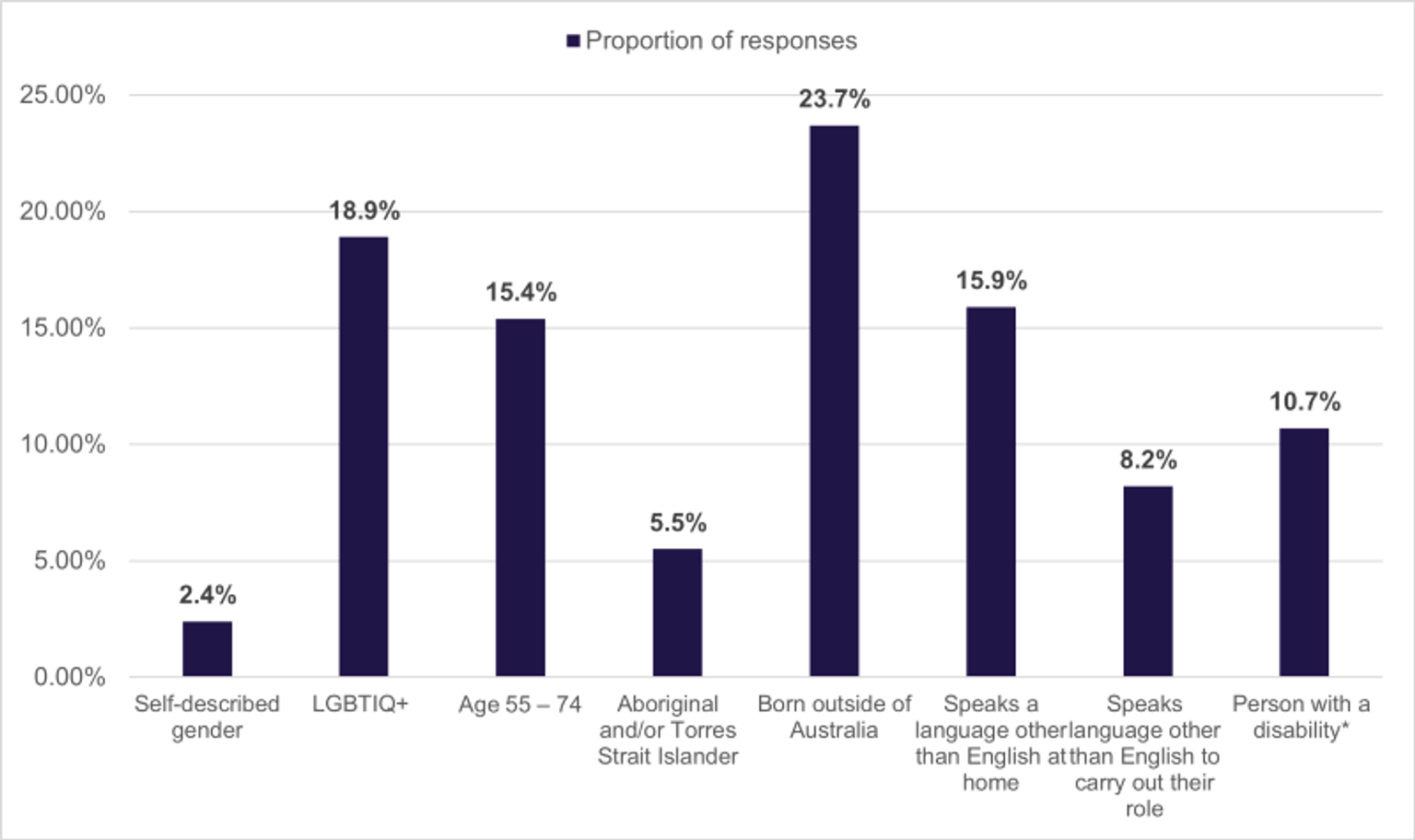Indicator: Increase workforce diversity
The Royal Commission highlighted the lack of detailed knowledge and essential workforce data about family violence workers in Victoria. To address this gap, we undertake the family violence workforce census every two years. The census collects data and information about family violence workforces.
In 2022, a Workforce Survey on Victoria’s specialist family violence workforce was undertaken in place of the family violence workforce census.1 The survey has been critically important in providing an updated understanding of the workforces, particularly in light of the COVID-19 pandemic, including workforce composition, intentions and conditions.
The data captured will inform the government’s strategic activities as well as being a valuable resource for the sector peaks and other bodies to support sector-based planning.
Measure: Number/proportion of workforce who identify as from a priority community
A diverse specialist primary prevention and family violence workforce is required to reflect the rich diversity of the Victorian community and provide services and spaces that are culturally safe, appropriate, respectful, and accessible for all service users.
Data from the Family Violence and Sexual Assault Workforce Pulse Survey report, in which 1,049 workers responded to the survey (an estimated 35 per cent of all family violence and sexual assault specialists in Victoria), indicates a modest level of diversity across the workforce.
Footnotes
1 As many of the survey questions had changed, the results from previous years were not comparable.
Updated
